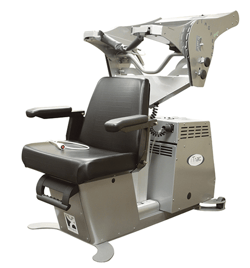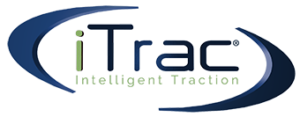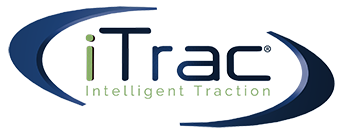Headache Patients Need Cervical Curve Remodeling
This is the second blog in the “Take the Lead: Tech Neck to Perfect Posture” series focusing on engaging and challenging doctors around the world to Take the Lead in their communities to begin changing people’s lives by integrating cervical curve remodeling and posture correction into their existing treatment protocols.
Consider this. If we as spine care experts were successfully correcting posture (i.e. restoring sagittal balance and improving global spinal alignment) on a consistent and predictable basis, our clinic door hinges would be worn out from all the new patients rushing in requesting posture correction (i.e. spinal correction). The unfortunate reality is; this is not currently the case for most clinics.
Doctors often convey the following common scenario “I’m to the point that I don’t like taking neck x-rays because most of them time, the patient has no neck curve, they have forward head posture and when they ask me “how can we fix it?”, I have nothing to offer them!” At this, the doctor is frustrated which we can all relate to. But now, put yourself in the patient’s shoes. He or she has just been informed by a spine care expert that “I have no solution to offer you for this condition”. What then? If this is a first-time chiropractic patient, the feelings of suspicion and doubt begin to arise in his or her mind which will likely become a barrier to the acceptance of your other treatment recommendations, now that they have been told you can’t fix his or her problem. Where will they go next for answers and solutions?
Perhaps they won’t have to look elsewhere any longer!
 With new cervical spine remodeling technology now available, structural correction is closer than you think.
With new cervical spine remodeling technology now available, structural correction is closer than you think.
With the addition of iTrac® cervical spine remodeling therapy we can now (confidently!) offer these patients predictable, measureable, consistent solutions to the rapidly growing posture epidemic.
iTrac Therapy is quickly and seamlessly integrated with your existing technique package to provide long-lasting structural corrections to your patients, enhancing your treatment outcomes and maximizing your patient’s quality of life and health potential.
Following is a brief case study of one of my patients to demonstrate how the addition of cervical spine remodeling is allowing me to do more for my patients.
She presented as a 25-year-old with chronic daily headaches and neck pain. She had spent the majority of her life under the care of an excellent chiropractor who delivered traditional chiropractic adjustments. These adjustments provided good symptomatic relief and functional improvement during her teenage years and even into her early twenties. Unfortunately, the relief she once enjoyed became more and more short-lived as she progressed from college into the early part of her career. She arrived at my clinic concerned and looking for answers.
She was on day 5 of a very intense headache, a cycle she had become all too familiar with. Upon clinical evaluation, it was quite obvious to me why her symptoms were becoming more consistent, more intense and less responsive to traditional chiropractic care.
She had lost 50% of her cervical curve, 50% of her atlas plane angle and she had developed nearly an inch of forward head posture. To a few doctors, the combination of these findings might be passed off as a normal variant and therefore no specific treatment prescribed to specifically address this abnormal structure. However, to most doctors these discoveries are very significant and provide valuable insight into the contributing factors in such a case, we just haven’t had the tools to consistently correct them.
Below is a breakdown of my treatment plan for this patient:
- Phase 1 (Corrective Phase – restore cervical curve/posture/function and reduce symptoms) of treatment consisted of chiropractic adjustments, trigger point therapy, posture corrective exercises and iTrac® Therapy: 3 visits/week – 4 weeks. On visit #8 her symptoms had completely resolved. On visit #13 I performed a re-exam and took post x-rays which demonstrated a normal cervical lordosis, normal atlas plan angle and only 2mm of forward head posture. The exam revealed normal ranges of motion and zero trigger points.
- Phase 2 (Transition Phase – maintain curve/posture/function and symptomatic relief) consisted of chiropractic adjustments, posture exercises and iTrac® Therapy: 1 visit/week – 4 weeks, 2 visits/month – 2 months, 1 visit/month – 2 months.
- Phase 3 (Maintenance Phase – maintain curve/posture/function and symptomatic relief) consists of chiropractic adjustments, posture exercises and iTrac® Therapy: 1 visit/month (avg.) to protect the patient’s investment in time, finances and energy. Analogous to wearing retainers after orthodontic braces are removed.
With consistent maintenance, my patient has been able to maintain her structural correction as well as her symptom-free, enhanced quality of life!
For those of you interested in learning more about cervical curve remodeling with iTrac® Therapy, this case will be reviewed in greater detail in our upcoming 15 minute “Lunch and Learn” on March 31. More information will be sent out about the Lunch and Learn in the upcoming weeks.
In order to best serve our patients and provide them with the most comprehensive spine care available, integrating cervical curve remodeling with your existing treatment protocol(s) is worth a closer look!
Our goal is to create a collaborative, productive discussion. We are taking the lead and fighting this posture epidemic in the communities we serve. I encourage you to reach out and share your questions and ideas with us.
Original article can be found here.



